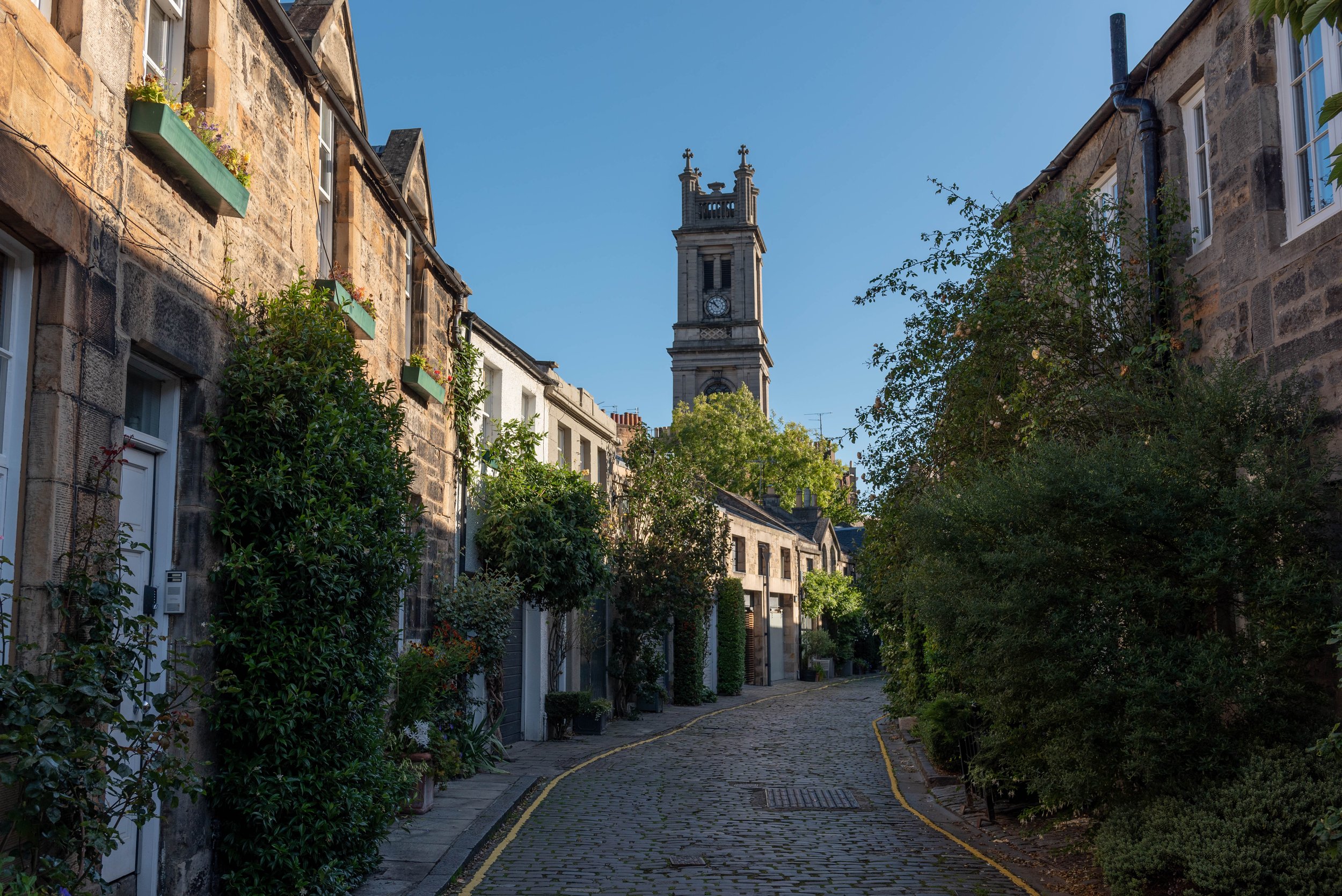Plan Your First Trip to Edinburgh: Top Tips & Essential Info
Last updated: 26 November 2025
Planning your first trip to Edinburgh? This guide covers everything you need to know – from must-see attractions and getting around, to budgeting, packing, safety tips and practical details like currency and plugs – to help you make the most of your visit.
🎥 Prefer to watch? Watch our Edinburgh first-timer video for our top tips for the city.
Practical Essentials
Language
English is the main language spoken in Edinburgh. You may also encounter:
Scottish Gaelic - a Celtic language historically spoken in the Highlands and Islands. Its decline began after the Highland Clearances, but it’s now experiencing a revival, with around 60,000 speakers. You’ll sometimes see Gaelic on road signs and public buildings.
Scots - another native Scottish language used in literature, songs and everyday speech. According to the 2011 census, around 1.5 million people said they could speak Scots.
For travellers, English is used everywhere, sometimes with local slang or a Scottish accent – but nothing that will impact your ability to get around.
Time Zone
Edinburgh – like the rest of the UK – operate on Greenwich Mean Time (GMT) in winter and British Summer Time (BST, GMT+1) in summer. GMT is the world’s reference point for time zones (the Prime Meridian runs through Greenwich in London), so if you’re travelling from abroad, you’ll likely see your local time listed as an offset from GMT.
Daylight Saving Time typically begins in late March and ends in late October. During BST, evenings are noticeably lighter, especially in June when the sun sets very late.
Plugs & Electricity
The UK uses Type G plugs, which have three rectangular prongs arranged in a triangle. Electricity runs on 230V and 50Hz. Most everyday devices – like phones, laptops, tablets and camera batteries – will charge normally as long as you have a travel adapter.
Where you need to be more careful is with heat-based appliances such as hairdryers, straighteners or curling irons. Many of these are not designed for 230V. Some are dual-voltage and will work fine, but if yours isn’t, you may need a voltage converter to avoid damaging the device.
Best Time to Visit & How Long to Stay
Edinburgh isn’t known for hot, sunny weather – the climate is fairly mild year-round but can be quite windy, and it’s not unusual to experience sun, clouds, rain and wind all in a single day. An umbrella can come in handy, though it’s tricky if the wind is strong! Rain tends to be on and off rather than continuous, so a short shower usually won’t ruin your day, but it’s always worth checking the forecast in the morning.
If you’re used to living closer to the equator, the daylight hours might surprise you: on the longest day, the sun rises just before 04.30 and sets after 22.00, while in midwinter, it rises after 08.30 and sets shortly after 15.30.
When to Visit
The “best” time to visit depends on what you want from your trip. August brings the world-famous Edinburgh Festival Fringe along with a host of other festivals – the city is buzzing with performances and events. However, this also means larger crowds and higher accommodation prices.
If you prefer a quieter experience, consider the shoulder seasons in spring or autumn, when the weather is still pleasant but there are fewer tourists. Winter has its own charm and gets quite busy with Christmas markets and Hogmanay (New Year) celebrations, though the days are much shorter.
How Long to Stay
Because Edinburgh is a compact city, you can see a lot in two to three days, covering key attractions in either the Old Town or New Town without feeling too rushed. Staying a few extra days gives you more time to explore both areas properly and enjoy some of the city’s hidden gems at a leisurely pace.
1 day: If you’re really pressed for time, you can fit in a quick visit to either the Old Town or New Town and catch a few highlights, but it will be a very fast-paced day.
2-3 days: Ideal for a fuller first-time experience, including top attractions in both Old and New Towns, a walk up Calton Hill or a visit to Edinburgh Castle.
5+ days: Perfect if you want to use Edinburgh as a base for day trips to surrounding areas by train or bus. Be sure to check out our blog post on the best day trips by train from Edinburgh for ideas!
Below, you’ll find a table of average highs, lows and days of rain per month to help plan your trip.
| Month | High/Low (C) | Days of Rain |
|---|---|---|
| January | 6/1 | 11 |
| February | 7/1 | 8 |
| March | 9/2 | 9 |
| April | 11/4 | 8 |
| May | 14/6 | 9 |
| June | 17/9 | 9 |
| July | 19/11 | 9 |
| August | 18/11 | 9 |
| September | 16/9 | 9 |
| October | 13/6 | 11 |
| November | 9/3 | 10 |
| December | 7/1 | 11 |
Weather & What to Pack
Edinburgh’s weather can change quickly, so layers are essential. Bring a mix of short- and long-sleeved tops, a warm jumper or fleece and a lightweight waterproof jacket that can handle a sudden shower.
Comfortable, sturdy walking shoes are a must – many streets are cobbled and some areas, like the Old Town, have steep hills. If you plan to climb up Arthur’s Seat, shoes with good grip will make the hike much easier.
Other handy items include:
A compact umbrella (though watch out for the wind!)
A hat, scarf and gloves in colder months
Sunglasses and sunscreen for those rare sunny days
For a more comprehensive packing list, take a look at our guide: 10 Things You Might Not Think to Pack for Edinburgh.
Tip: Even if the forecast looks sunny in the morning, be prepared for rain later in the day – the weather in Edinburgh can be unpredictable, and it’s easy to go from sunshine to showers within a few hours.
Money Matters
Currency & Notes
Scotland uses the pound sterling (£), the same as the rest of the UK (England, Wales and Northern Ireland). However, Scottish banks – the Bank of Scotland, Royal Bank of Scotland and Clydesdale Bank – print their own notes.
An interesting tidbit: Scottish notes are printed by retail banks rather than a central bank (like the Bank of England), which means they are not technically legal tender anywhere in the UK, including Scotland itself. These banks are required to hold the same sum of notes in Bank of England notes, so they’re still fully backed and safe to use.
We’ve never had issues using Scottish notes, but they may be refused in England or abroad. Before leaving Scotland, it’s a good idea to exchange any leftover notes for Bank of England notes at a local bank.
Payment Methods
Cash is widely accepted, but most businesses now prefer card payments. Visa and Mastercard are the most widely accepted cards. Contactless payment is also common and convenient for smaller purchases.
ATMs & Withdrawing Cash
ATMs are dotted all over the city and most offer free withdrawals. A quick Google Maps search will show you the nearest machines. Most ATMs advertise “free cash withdrawals”, meaning the ATM itself won’t charge a fee. Keep in mind though, that your own bank may still apply a fee.
Tipping in Edinburgh
Tipping isn’t as obligatory as in some countries like the US, but it is still appreciated. Here’s a quick guide:
Restaurants: If there’s no service charge, 10% is standard.
Hotels: Housekeepers, bellhops and doormen usually get £1-2.
Taxis: Rounding up to the next pound is customary.
Where to Stay
If you want to be right in the middle of everything, Old Town and New Town are the best areas to stay. Both are central, walkable and packed with Edinburgh’s most iconic sights, making them ideal for first-time visitors.
If you don’t mind being just a touch further out (but still very close), neighbourhoods like Stockbridge, Dean Village and the Southside are great options too. They’re quieter, still well-connected and offer a nice balance between convenience and local charm.
For first-timers, we’d still recommend Old Town or New Town for sheer ease. You’ll find a wide range of accommodation at all budget levels – from hostels to boutique hotels to luxury stays.
How Much to Budget
How much you spend in Edinburgh really depends on your travel style – but below we’ve put together simple per person, per day estimates for accommodation, food and transport across low, medium and high budgets. These ranges assume you’re visiting in shoulder season, not during August festivals or Hogmanay, when prices can rise dramatically.
| Low | Medium | High | |
|---|---|---|---|
| Accommodation | £30-45 Hostel dorm |
£110-140 Budget/mid-range hotel |
£180+ 4-5 star hotel |
| Food | £15-20 Self-catered meals |
£35-50 One meal out |
£60-90 All meals out |
| Transportation | £0 Walk everywhere |
£5 Bus |
£15-25 Taxis/Uber |
| Total Per Day | £45-65 | £150-195 | £255-295+ |
Looking to stretch your money further? Check out our guides to Edinburgh on a Budget: 15 Free (or Almost Free) Things to Do and 12 Ways to Save Money in Edinburgh for plenty of ways to enjoy the city without breaking the bank.
Must-See Attractions
Some highlights you won’t want to miss include Edinburgh Castle, the Royal Mile, Calton Hill, Arthur’s Seat and the atmospheric The Real Mary King’s Close. If you enjoy historic streets, architecture and hidden corners, both the Old Town and New Town have plenty to explore.
Check out our detailed guides for each to plan your walking routes and top sights:
Getting Around Edinburgh
Edinburgh is a very walkable city, especially around the Old Town and New Town, but be prepared for hills and cobblestones! Most visitors mix walking with public transport: the buses go almost everywhere and the tram runs between the airport through the city centre and to the north of Edinburgh. Taxis and ride-shares are widely available and you don’t need a car unless you’re heading out of town.
For a full breakdown of buses, trams, tickets and journey planning, read our detailed Getting Around Edinburgh guide.
Safety & Emergencies
Edinburgh is generally a safe city, but it’s smart to take the usual travel precautions. Keep an eye on your belongings, especially in crowded tourist areas like the Royal Mile, Princes Street or during festivals – pickpockets sometimes target busy spots.
When walking at night, stick to well-lit streets and main areas, particularly around the Old Town. If you’re visiting during festival season or Hogmanay, be aware that crowds can be dense – stay alert and make a plan for meeting points if you get separated from your group.
In case of an emergency, dial 999 for police, fire or ambulance. For non-urgent police matters, call 101. Keep these numbers handy, just in case.
How to Pronounce Edinburgh
Now, for probably the most important point: how to say Edinburgh correctly! Many visitors, especially from North America, pronounce it like “ed-in-boro” (ending like “borough”), but that’s not right. And it’s definitely not “ed-in-berg” either.
The proper pronunciation is “ed-in-buruh”, or if said quickly, “ed-in-bruh”. Rolling the “r” slightly will make it sound more natural. Say it a few times before you arrive and you’ll sound like a local in no time!
Bonus Tips & Tricks
Tickets & Attractions
For popular attractions such as Edinburgh Castle and The Real Mary King’s Close, it’s worth pre-booking tickets to skip queues, especially during festivals or peak seasons. Consider passes like the Edinburgh City Pass, which gives entry to multiple attractions, or the Royal Edinburgh Ticket, which includes key sites plus hop-on, hop-off bus access.
Hidden Gems
While Edinburgh is famous for its landmarks, a few quieter spots offer a chance to experience the city’s character away from the crowds:
Circus Lane - Located in Stockbridge, this picturesque cobbled street is lined with lovely townhouses and flowers in the warmer months. It’s a great spot for a quick stroll or photo stop and captures the charm of Edinburgh’s residential side.
Dean Village - Just a short walk from the city centre, Dean Village feels like a step back in time. With its historic buildings, tranquil Water of Leith river and quaint bridges, it’s perfect for a peaceful wander or a slow-paced afternoon away from the busier streets of the Old Town.
Water of Leith Walkway - This scenic riverside path runs through much of the city, connecting Dean Village to Leith in the north of Edinburgh. Ideal for walking, jogging or cycling, it’s a chance to see a quieter side of Edinburgh while still being close to central attractions.
The Meadows - If you want a local vibe, this large park south of the Old Town is popular with students and families alike. It’s perfect for a picnic, a stroll or just watching the world go by!
Stay Hydrated
Scotland’s tap water is safe to drink, so bring a reusable water with you. You can refill it throughout Edinburgh using Scottish Water’s Top Up Taps, which are dotted around the city – there’s even an online map showing every location.
When eating out, ask for tap water rather than bottled water. Restaurants often charge for bottled water, but tap water is free and perfectly safe.
Edinburgh is a compact city full of history, culture and hidden corners waiting to be discovered. With these tips, you’ll be well prepared to make the most of your visit. Which tip did you find the most helpful? Let us know in the comments!


























Visiting Edinburgh with a baby? Here are 8 simple, budget-friendly tips to save money on food, baby supplies and family fun!